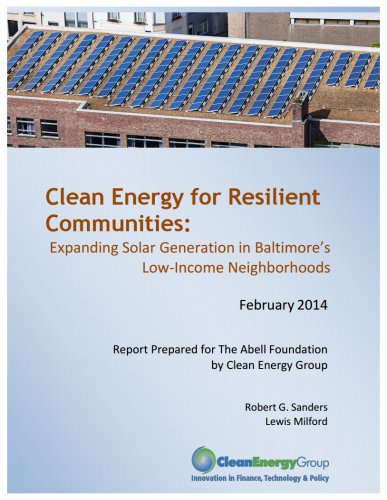This report, prepared for The Abell Foundation, makes recommendations for expanding the use of solar generation for community development in Baltimore, Maryland.
The paper concludes that the best way to do that is to expand the use of solar photovoltaic (PV) with battery storage—to enable low-income populations to benefit from the long-term savings that can be realized through the use of renewable energy, and to protect vulnerable population from the damaging effects of power outages in severe weather events.
This report is opportunistic. It tries to steer clear of a conventional approach that argues only for long and deep subsidies for solar to reach the poor, knowing that such an approach usually does not last. Instead, it calls for use of solar in situations where policy and market trends are already emerging—to protect the vulnerable from harm in the face of increasing extreme weather events, to attract companies to deliver clean energy services with new business models, and to use public funds wisely through new financing tools.
This is the first report that has analyzed detailed policy trends and recommendations from around the country for how to use clean energy for community resiliency–a new “power resiliency” strategy for community leaders, public officials, businesses, and foundations.
Download Clean Energy for Resilient Communities
The report is designed to address several “divides” in clean energy and community development. We have a technology gap between poor and the well off where the well off get the technology benefits first. We have a public policy gap that has largely supported financing for solar among the better off but not the poor. And we have a philanthropic gap where foundations could do much more to advance clean energy to protect vulnerable populations from more frequent severe weather events brought on by climate change.
All gaps must be closed to better serve the most vulnerable citizens in most need of basic services like electric power, particularly when it is needed the most.
Table of Contents
Executive Summary
Introduction
Resilient Communities and Resilient Power
Best Practice for Expanding Solar Generation in Low-Income Urban Communities
Financing Options
Costs and Benefits of Distributed Solar Generation
Energy Policy and Regulatory Environment in Maryland
Recommendations
Endnotes
List of Interviews
Format
Source





